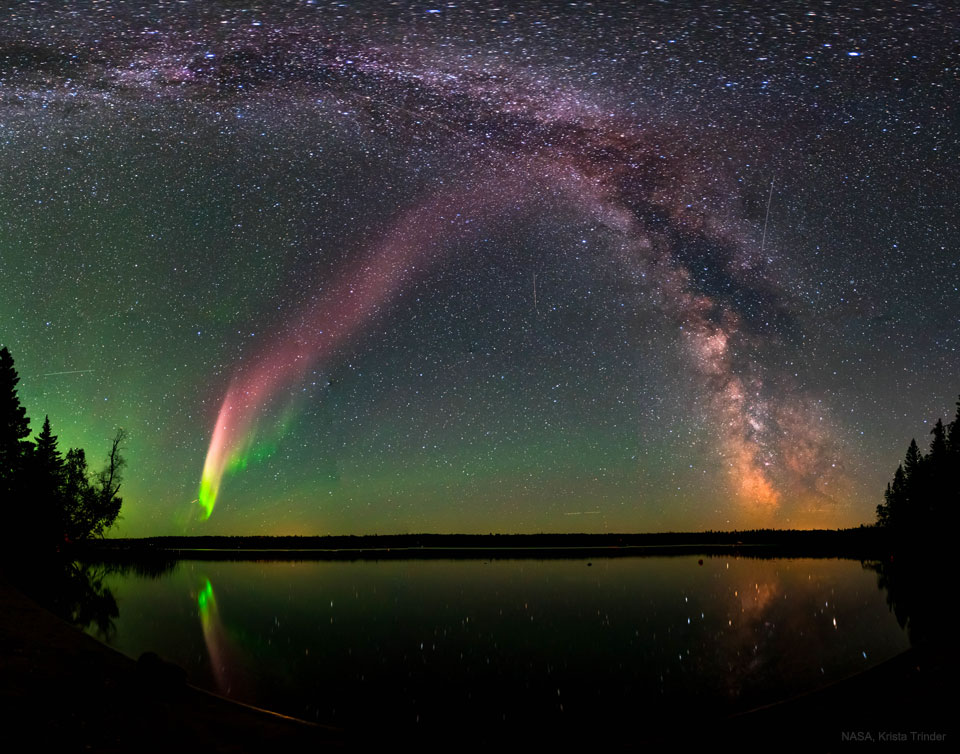2020年11月17日
A Glowing STEVE and the Milky Way
Image Credit: NASA, Krista Trinder
Explanation: What’s creating these long glowing streaks in the sky? No one is sure. Known as Strong Thermal Emission Velocity Enhancements (STEVEs), these luminous light-purple sky ribbons may resemble regular auroras, but recent research reveals significant differences. A STEVE’s great length and unusual colors, when measured precisely, indicate that it may be related to a subauroral ion drift (SAID), a supersonic river of hot atmospheric ions thought previously to be invisible. Some STEVEs are now also thought to be accompanied by green picket fence structures, a series of sky slats that can appear outside of the main auroral oval that does not involve much glowing nitrogen. The featured wide-angle composite image shows a STEVE in a dark sky above Childs Lake, Manitoba, Canada in 2017, crossing in front of the central band of our Milky Way Galaxy.
Tomorrow’s picture: doubled stars
STEVE辉光与银河
影像提供: NASA, Krista Trinder
说明: 这些颀长的天空光带是怎么产生的?没人能说个准。这些名为STEVEs (增速导致的突发性热辐射)、色泽淡紫的天空光带,乍看酷似常见的极光,不过,最近的研究发现二者有显著的差异。经过精确量测之后,STEVE的颀长和不寻常的色泽,指出它或许与副极光区离子流(SAID),一种先前认为不可见的的超声速大气热离子流有关。目前的研究认为,有些STEVE有共伴的泛绿光栅栏结构,一种出现在主极光椭圆外头、少有氮辉光的栅栏状极光。这幅广角的组合主题影像,呈现2017年加拿大.曼尼托巴省.查德斯湖上方暗空中,切过银河系中央盘面前方的一例STEVE。
明日的图片: doubled stars







